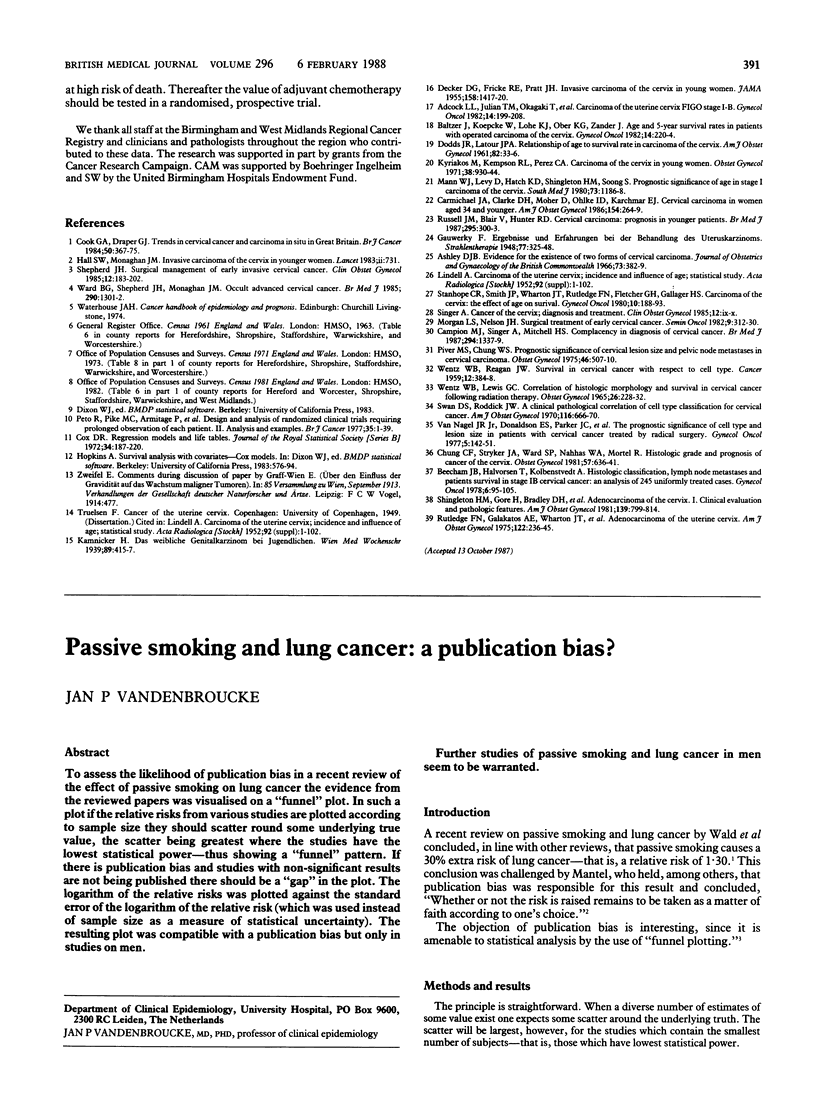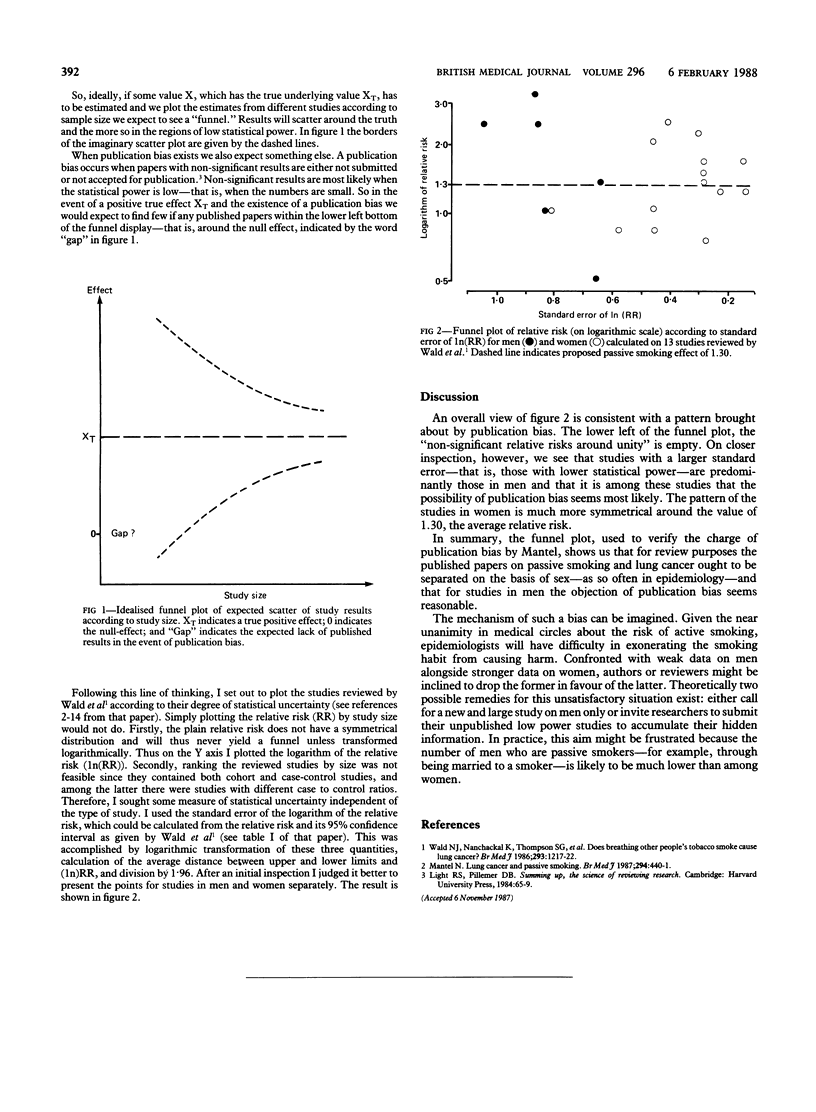Abstract
To assess the likelihood of publication bias in a recent review of the effect of passive smoking on lung cancer the evidence from the reviewed papers was visualised on a “funnel” plot. In such a plot if the relative risks from various studies are plotted according to sample size they should scatter round some underlying true value, the scatter being greatest where the studies have the lowest statistical power—thus showing a “funnel” pattern. If there is publication bias and studies with non-significant results are not being published there should be a “gap” in the plot. The logarithm of the relative risks was plotted against the standard error of the logarithm of the relative risk (which was used instead of sample size as a measure of statistical uncertainty). The resulting plot was compatible with a publication bias but only in studies on men.
Further studies of passive smoking and lung cancer in men seem to be warranted.
Full text
PDF

Selected References
These references are in PubMed. This may not be the complete list of references from this article.
- Mantel N. Lung cancer and passive smoking. Br Med J (Clin Res Ed) 1987 Feb 14;294(6569):440–441. doi: 10.1136/bmj.294.6569.440-b. [DOI] [PMC free article] [PubMed] [Google Scholar]
- Wald N. J., Nanchahal K., Thompson S. G., Cuckle H. S. Does breathing other people's tobacco smoke cause lung cancer? Br Med J (Clin Res Ed) 1986 Nov 8;293(6556):1217–1222. doi: 10.1136/bmj.293.6556.1217. [DOI] [PMC free article] [PubMed] [Google Scholar]


